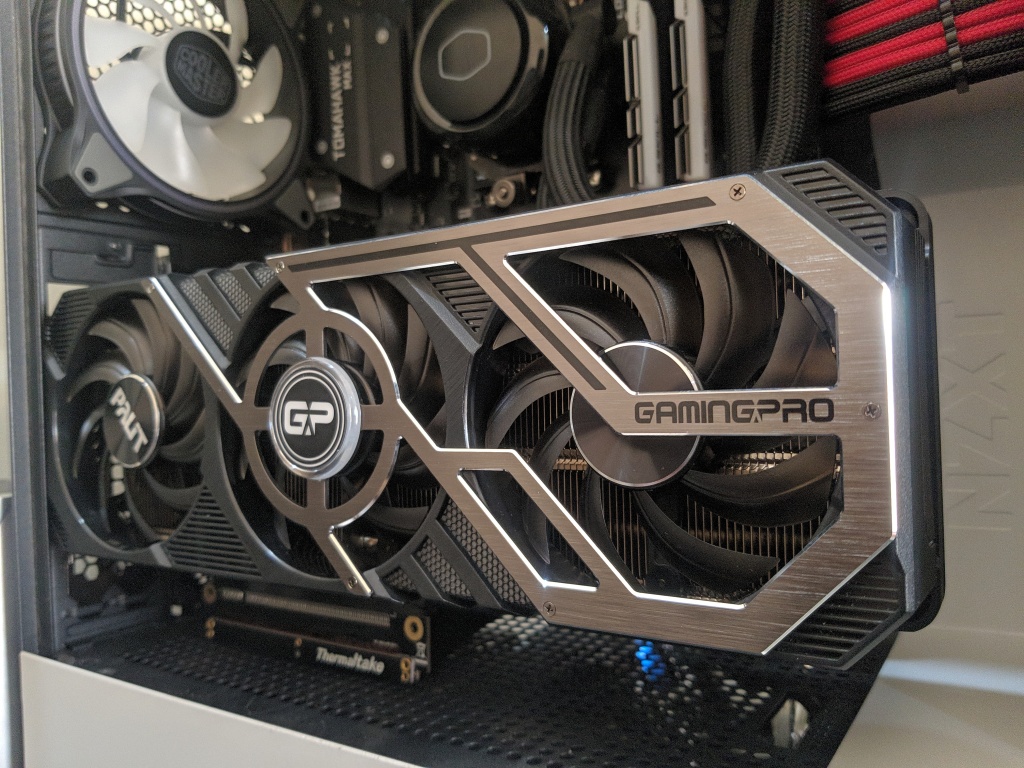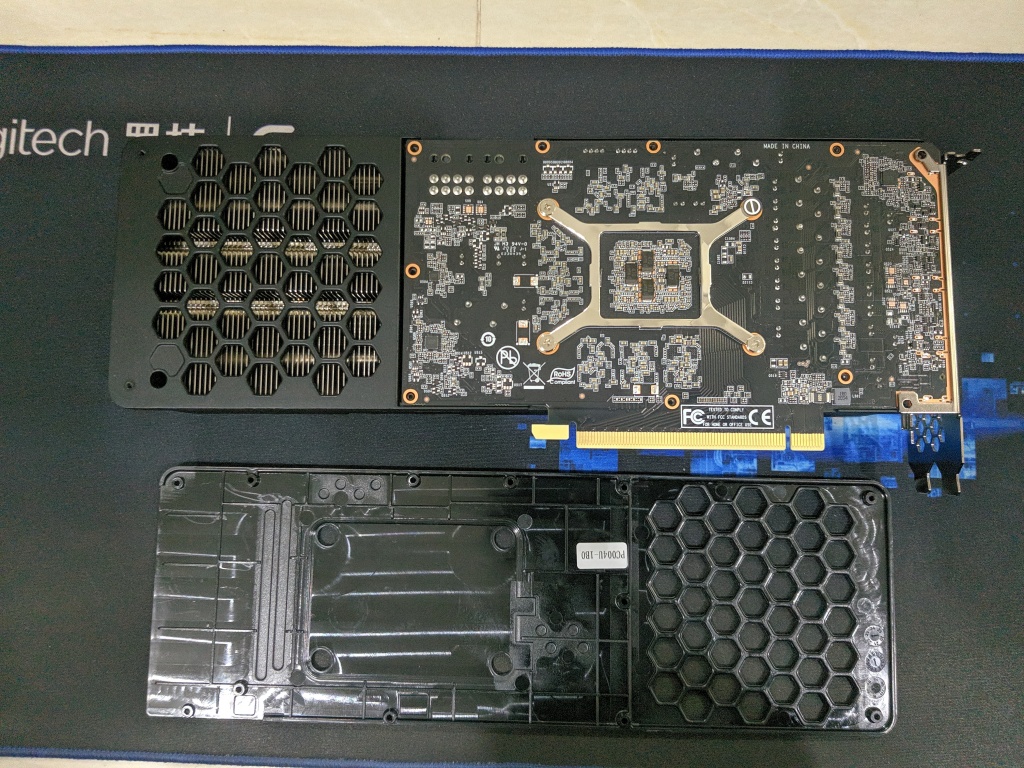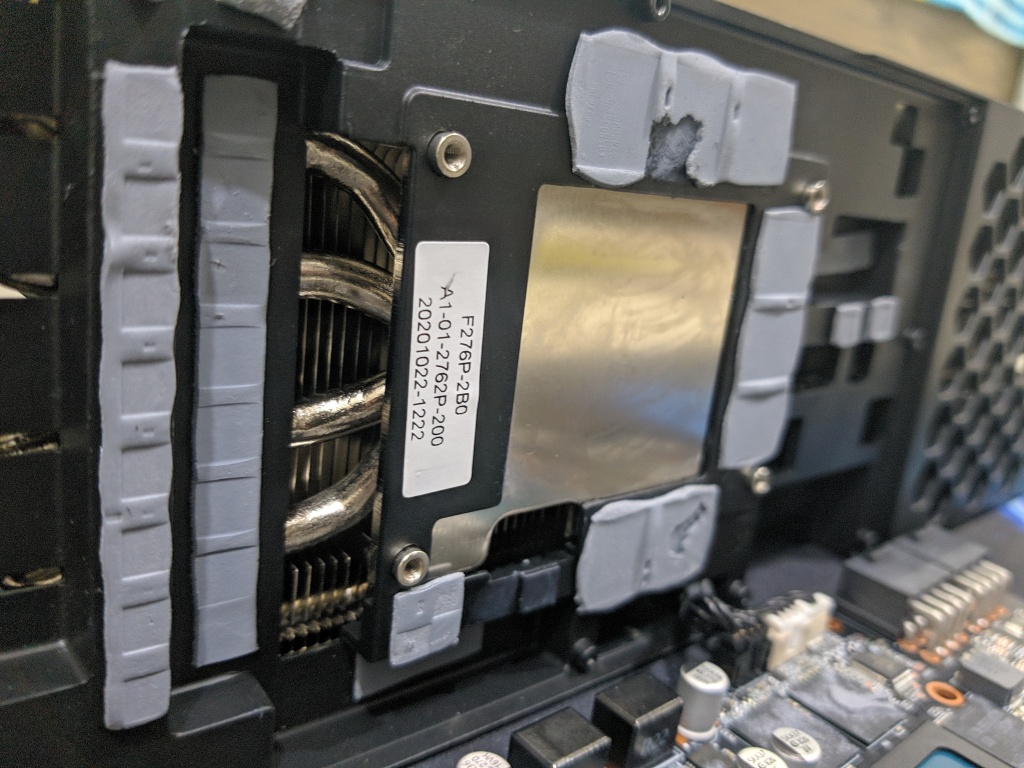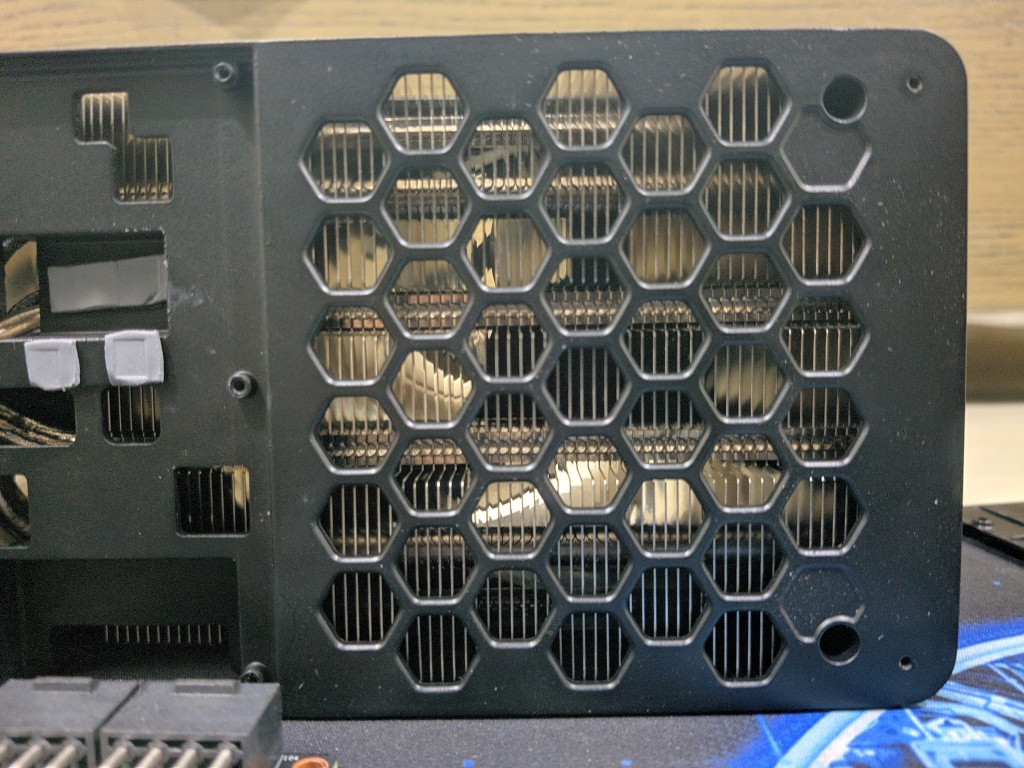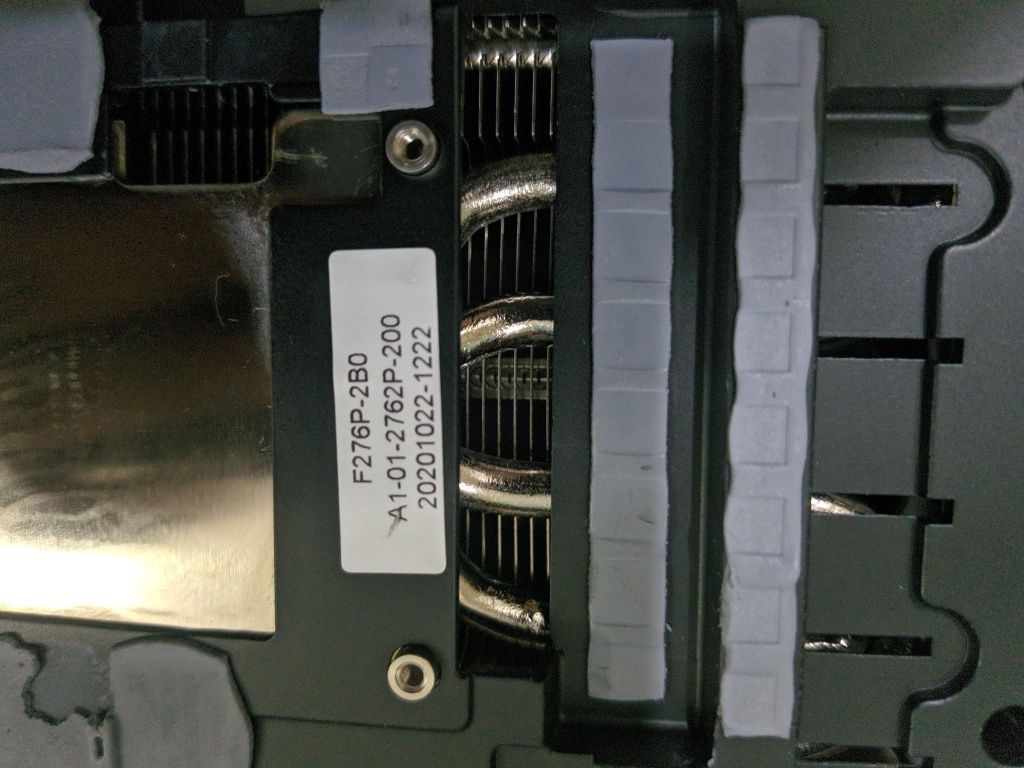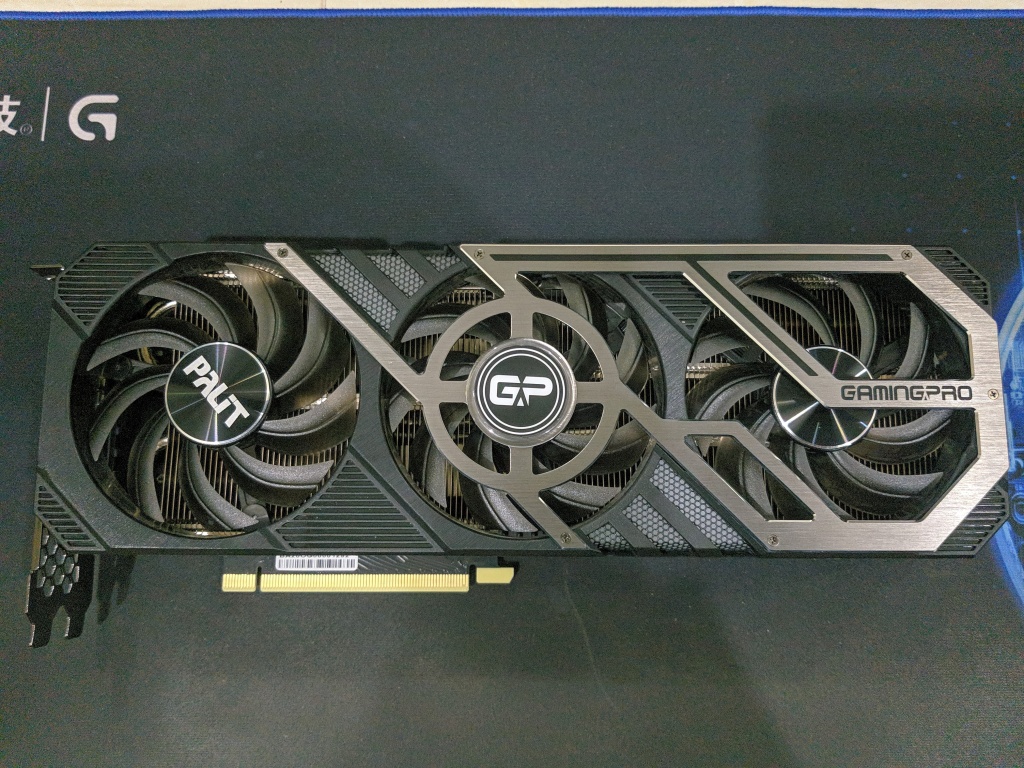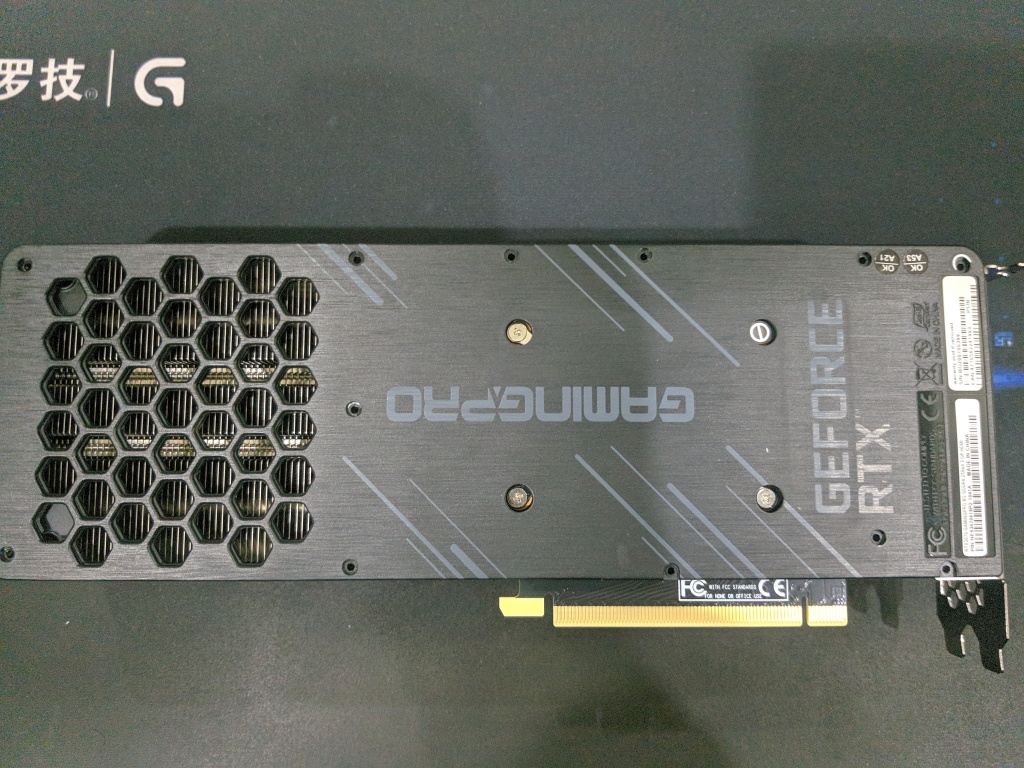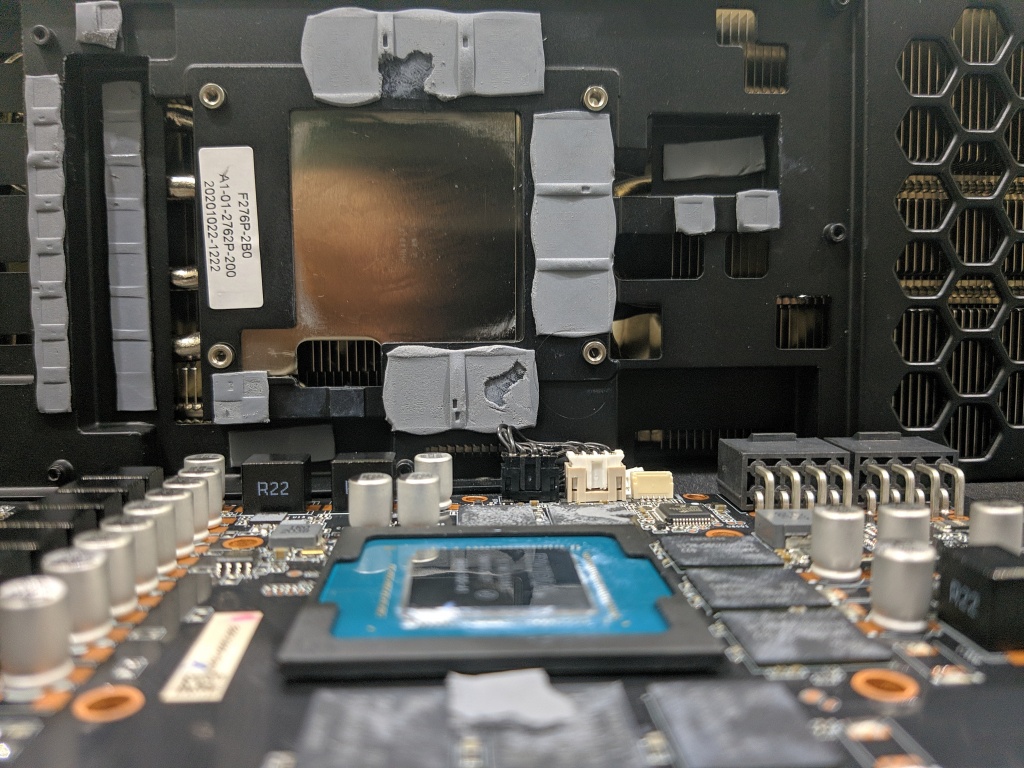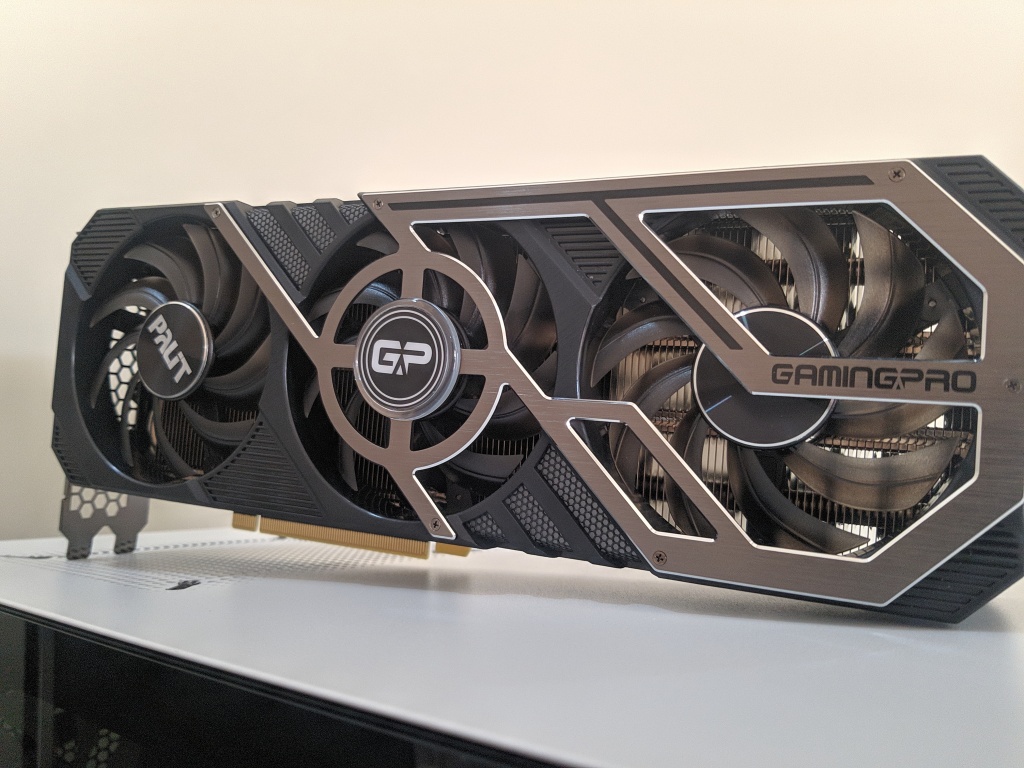Just like with previous graphics card launches, the RTX 3070 is not only available in the Founder’s Edition variant from Nvidia, but also in several other variants from Nvidia’s Add-in-Board Partners. One of the aftermarket AIB variants is from Palit Microsystems which is one of the biggest graphics card manufacturers in the world by volume, and it mostly targets the European and Asian markets. Palit has released 3 variants of their RTX 3000 series graphics cards:
Palit Gaming Pro RTX 3000 seriesPalit Gaming Pro OC RTX 3000 seriesPalit GameRock OC RTX 3000 series
Today, we will be taking a look at the cooling assembly and components of the Palit Gaming Pro RTX 3070 to help potential buyers make an informed purchase decision if they want to buy an AIB variant of the RTX 3070. The cooler is one of the main things that is in the hands of the AIB partner, and it should be a factor in the purchase decision as well. Potential buyers should be well-informed about the strengths and drawbacks of the cooling solutions used in various different aftermarket cards from AIB partners. Cooling performance can directly impact the gaming performance of the graphics card especially in the new graphics card architectures like Ampere, which use thermal headroom data to boost the clock speeds of the card higher automatically. Therefore, it is important to be well-informed about the cooling solutions that are used in these graphics cards and whether or not they are sufficient to keep the GPU cool and quiet even under heavy load.
Teardown Process
In order to get to the cooler to analyze its different components, we first have to tear down the card itself. Tearing down the Palit Gaming Pro RTX 3070 was fairly easy and straightforward, and even relatively inexperienced users should have no problems with this process. First, a number of screws have to be removed from the backplate of the card in order to remove the plastic backplate from the card. Secondly, 4 screws have to be removed in order to separate the retention bracket that holds the PCB firmly against the cooler. Finally, 2 screws have to be removed from the I/O plate, and then the PCB of the card can be removed from the cooler. Gently separate the PCB from the cooler so that the thermal pads between the different PCB components and the cooler do not get torn. It is always a good idea to keep an extra set of thermal pads with you in order to replace the pads if they do get damaged. The fan cables and the RGB lighting cables should also be carefully removed before the cooler is completely separated from the PCB. We have already published an in-depth analysis of the PCB of the Palit Gaming Pro RTX 3070. It is highly recommended that you check out this article where we took a deep dive into the PCB design and the components of the Palit Gaming Pro RTX 3070.
Cooler components
After tearing down the card and separating the cooler assembly from the PCB, it is time to analyze the individual components of the cooler itself.
Copper Baseplate
Arguably the most important part of the entire heatsink assembly is the nickel-plated copper baseplate which makes direct contact with the GA104 GPU die. The baseplate is reasonably flat with a large surface area that is considerably wider and taller than the dimensions of the GPU itself. Thermal paste will allow the efficient transfer of heat from the GPU die to the copper baseplate, which is then transferred throughout the heatsink array with the help of copper heatpipes.
Large Heatsink
The Palit Gaming Pro RTX 3070 graphics card features a large hefty heatsink that extends throughout the entire length of the card. The heatsink has a high density of fins which helps to increase the surface area of the heatsink exponentially, resulting in more efficient heat dissipation. The fins run perpendicular to the length of the card, which means that the fans will blow air straight down onto the fins, causing the warm air to exit the card through the sides rather than the back. This is generally considered an excellent cooling scheme but requires good case ventilation in order to expel the warm air from the case. There is also a two-section nickel-plated plate which is screwed onto the main heatsink. This plate serves to cool the memory chips as well as the VRM components of the PCB. The plate aids in the transfer of heat from these components to the heatsink, from where it is dissipated.
Copper Heatpipes
There is a grand total of 6 nickel-plated copper heatpipes that are the main conduits for heat transfer from the heat-generating components to the main heatsink itself. These heatpipes are methodically placed throughout the heatsink assembly in order to maximize the heat dissipation surface. Each of the 6 heatpipes contacts the copper baseplate and transfer heat from the GPU to the main heatsink. 4 heatpipes come from the left side of the copper baseplate and travel throughout the whole length of the underlying heatsink. 2 more heatpipes come out from the right side of the baseplate and travel through the fin array on the right side of the card. These heatpipes travel linearly, then curl inside to form a W shape in order to increase the surface area that is covered by the heatpipes. Palit has dubbed this approach as the “Double U Heat Pipe” technology. This approach helps to maximize the transfer of heat from the heat-generating components.
Fans
Palit has installed three 95mm fans on the Palit Gaming Pro cooler which all spin in the same direction. The fans are branded as TurboFan 3.0 with dual ball bearings and this technology aids to reinforce fan stability. The new TurboFan 3.0 technology is also IP5X dust resistant and claims to lower the fan vibrations while prolonging the life expectancy of the fans. The fans also feature a 0-db Tech mode which turns off the fans when the system is idling or under a light load. Generally, we observed in our testing that the fans turn off below an operating temperature of 55o C. This keeps the graphics card quiet and also increases the life expectancy of the fans because they only spin when they have to.
Flow-through Design
Nvidia has pioneered an exciting new cooling design in its Founder’s Edition RTX 3000 series graphics cards in which the PCB has been shortened but the fan shroud still remains long. This means that air is pulled through the end of the heatsink by a fan which helps to cool down the heatsink more efficiently. Most of the AIB partners also implemented a version of this design in their cards and Palit is no exception. On the Palit Gaming Pro RTX 3070, there is a considerable area of the heatsink that has no PCB under it, making it ideal for the implementation of this flow-through design. The third fan pushes air straight through the heatsink which is expelled through the backside of the card. There are many openings in the backplate in a nice honeycomb pattern which allows this air to be expelled through the backplate and into the case itself. This solution offers an additional level of cooling in addition to the traditional cooling from the heatsink and heatpipes.
Cooling the PCB Components
Understanding the different parts of the cooling solution makes it easier to understand how the different PCB components are cooled in the Gaming Pro RTX 3070.
The GPU: The GA104 die is the main heat-generating component of the Palit Gaming Pro RTX 3070 and it is cooled by the nickel-plated copper baseplate, which contacts 6 heatpipes directly. The heatpipes travel in different directions in the main heatsink to increase the surface area for heat dissipation. The fans blow cool air on the heatsink in order to remove the heat from the fins of the heatsink and the heat is dissipated out of the graphics card.The GDDR6: There are 8 GDDR6 memory modules on the PCB that also need to be cooled to ensure optimal performance. A large nickel-plated metal plate is screwed onto the main heatsink which contacts the GDDR6 modules through a thermal pad. This plate transfers the heat from the memory modules to the main heatsink where it is dissipated.The VRMs: The VRMs are cooled in a similar way as the GDDR6 modules. There are long, thin thermal pads that cover MOSFETs and the chokes and they ensure heat transfer from these components to the metal plate. The heat is then transferred to the heatsink, where the fans help in dissipating the heat into the chassis.
Cooling Results
All in all, the cooler on the Palit Gaming Pro RTX 3070 is quite well-built and has decent coverage of all the major heat-generating components. Thermal pads are placed where necessary in order to ensure maximum heat transfer between the components and the cooler. The 3 fans also complement the large heatsink quite well and ensure cool and quiet operation even under load. Our cooling tests prove that the Palit Gaming Pro RTX 3070 is an excellent performer when it comes to both thermals and acoustics. Furmark torture test was used to push the graphics card to its thermal limits in order to judge the efficiency of the cooler. While running on its stock profile with the default fan curve, the Gaming Pro RTX 3070 peaked at just 67oC with an ambient temperature of 23oC. The fans were spinning at just 39% which translates to roughly 1400RPM, which was barely audible outside of the case. When we overclocked the card manually by moving the power limit slider to 113% and adding a +150Mhz offset on the core and +1000Mhz offset on the memory, the card peaked at just 71o C under the same conditions, with the fans now running at 50% which translates to roughly 1900Mhz under full load. This is a very impressive result for the card both thermally and acoustically. These numbers show that the cooler is very well built and provides excellent efficiency and a good noise profile as well. The thermal results prove that there is plenty of headroom for the user to overclock the card without worrying too much about the temperatures.
Verdict
While it is unwise to base your purchase decision on the cooling system of a particular graphics card, it is one of the most important features that you have to consider before buying an aftermarket card. AIB partners have the resources and the freedom to put good custom cooling solutions in their graphics cards and that is exactly what Palit has done with their Palit Gaming Pro RTX 3070. The Gaming Pro checks all the boxes when it comes to build quality of the cooler, with decent coverage of all the heat-generating components as well. The 3 fans provide plenty of cooling potential while also maintaining a quiet sound profile even under full load. The card’s heatsink and heatpipe system has proven effective in our testing and provided some impressive numbers both thermally and acoustically. Considering that the Palit Gaming Pro RTX 3070 is supposed to stay close to the MSRP, it should prove to be a good purchase should the buyer decide to go with it over the Nvidia Founder’s Edition RTX 3070.
Palit Gaming Pro GeForce RTX 3070 - PCB AnalysisPalit Gaming Pro GeForce RTX 3070 ReviewNVIDIA 3070 Ti Positioned Between RTX 3070 and RTX 3080 To Compete With AMD…To No One’s Surprise, Some of the New RTX 3070 Ti Laptop GPUs Are Actually…
